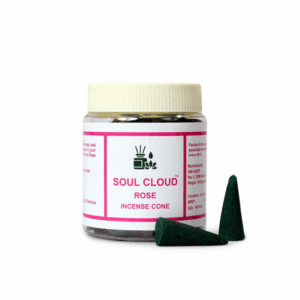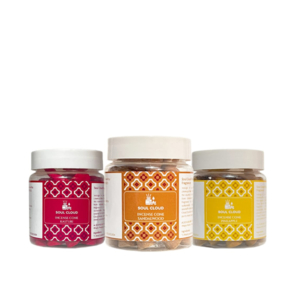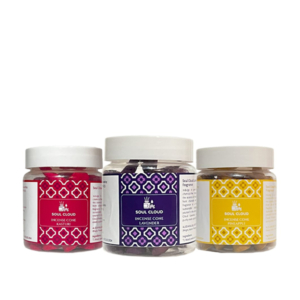The Science of Bright Colors in Nature and Games
Colors have fascinated humans for millennia, serving crucial roles in survival, communication, and cultural expression. In the natural world, bright colors often signal danger, attract mates, or facilitate camouflage, illustrating their importance in evolutionary strategies. Today, this understanding influences how designers create vibrant digital worlds, especially in interactive media and gaming. By exploring the scientific principles behind bright colors, we can see how nature’s palettes inspire technological innovation and artistic expression alike.
1. Introduction to Bright Colors in Nature and Human Perception
a. The role of color in survival and communication in the natural world
In nature, bright coloration often functions as a survival tool. For example, poison dart frogs display vivid hues to warn predators of their toxicity—a phenomenon known as aposematism. Similarly, peacocks use their iridescent feathers during courtship, signaling genetic fitness. These visual cues are essential for species interactions, helping animals identify threats or mates quickly and efficiently.
b. How humans perceive and interpret bright colors
Humans perceive bright colors through cone cells in the retina, which are sensitive to specific wavelengths. Our brains interpret these signals as vivid hues, often associating them with emotions or cues—red with excitement or danger, green with safety or growth. This perception has a biological basis but is also shaped by cultural contexts, influencing how colors are used in art and communication worldwide.
c. The significance of color in cultural and artistic contexts
Colors carry symbolic meanings across cultures. For instance, white signifies purity in Western societies but mourning in some Asian cultures. Artists and designers leverage these associations to evoke specific feelings or messages, illustrating the deep connection between color perception and cultural identity.
2. Biological and Chemical Foundations of Bright Colors
a. Structural vs. pigment-based coloration mechanisms in animals and plants
Bright colors originate from two primary mechanisms. Pigment-based coloration results from chemical compounds that absorb and reflect specific wavelengths—like carotenoids in flamingos. Structural coloration, however, involves microscopic structures that interfere with light, producing iridescence seen in peacock feathers or certain beetles. Both mechanisms demonstrate nature’s ingenuity in creating vivid visual effects.
b. The science behind fluorescence, iridescence, and pigmentation
Fluorescence occurs when molecules absorb light at one wavelength and emit it at another, often visible wavelengths—think of glow-in-the-dark organisms. Iridescence results from microscopic structures causing light interference, changing colors with viewing angles. Pigmentation involves chemical compounds like melanin or carotenoids that determine coloration. Understanding these mechanisms explains the diversity of bright colors observed in nature.
c. Evolutionary advantages of vivid coloration
Vivid coloration can serve multiple adaptive purposes. Warning colors deter predators, while attractive hues facilitate mate selection. Structural colors like iridescence can also enhance camouflage or mimicry, conferring survival benefits. These strategies demonstrate how evolution harnesses color for species success across different environments.
3. Bright Colors as Signals: Communication and Adaptation
a. Warning coloration and aposematism in nature
Aposematic species, like the poison dart frog, display striking colors to warn potential predators of their toxicity. This visual signaling reduces the risk of predation and is often reinforced by other defenses, such as foul taste or toxicity—an evolutionary strategy that benefits both predator and prey by establishing clear communication channels.
b. Mating displays and sexual selection
Bright colors also play a key role in sexual selection. Male birds with iridescent plumage or vibrant tail feathers are often more successful in attracting females, as these traits signal health and genetic fitness. Such visual cues drive evolutionary pressures toward more elaborate coloration.
c. Camouflage and mimicry: balancing visibility and concealment
While bright colors serve as signals, some species use coloration for concealment. Camouflage allows animals like chameleons or certain insects to blend into their environment. Mimicry, where harmless species imitate the warning colors of toxic counterparts, exemplifies how coloration balances between attracting attention and remaining hidden, depending on ecological needs.
4. The Psychology of Bright Colors in Human Experience
a. Emotional and cognitive effects of different colors
Research shows that colors influence mood and cognition. Red can evoke excitement or urgency, often used in sales and warnings. Blue is associated with calmness and trust, making it popular in corporate branding. Yellow tends to stimulate optimism and energy, impacting consumer perceptions and behavior.
b. Bright colors in marketing, branding, and entertainment
Vivid hues attract attention and are strategically employed in advertising and media to create memorable impressions. For example, vibrant game covers or product packaging leverage color psychology to influence purchasing decisions. Bright colors in digital content can also enhance engagement and retention.
c. Cross-cultural interpretations and symbolism
Color meanings vary globally. While red signifies luck in China, it can symbolize danger in Western contexts. Understanding these cultural nuances is essential for designers and marketers to communicate effectively across diverse audiences.
5. Bright Colors in Digital and Interactive Media
a. The use of vivid colors in game design to attract attention and convey meaning
Game designers utilize bright colors to guide players, highlight important elements, and evoke specific emotions. For instance, the energetic palette of casual games like the curve ramps up smartly in Chicken Road 2 exemplifies how engaging visuals keep players invested. The strategic use of color enhances gameplay clarity and excitement.
b. How color choices influence player perception and behavior
Colors can affect decision-making and emotional responses. Bright, contrasting colors may stimulate faster reactions, while harmonious palettes promote longer engagement. Developers leverage these insights to design immersive experiences that align with game mechanics and narrative.
c. The role of color in creating immersive environments
Vivid color schemes contribute to world-building, making virtual environments feel more real and compelling. Brightly colored elements can evoke specific atmospheres—excitement, danger, tranquility—enhancing the storytelling power of digital media.
6. Examples from Popular Games and Media
a. Crossy Road and Chicken Road 2: Modern illustration of vibrant colors
Crossy Road and its sequel Chicken Road 2 showcase how bright, playful colors create an inviting atmosphere for casual gamers. The vivid palette not only enhances visual appeal but also guides gameplay, such as highlighting safe crossing zones or obstacles. This demonstrates how natural principles of color signaling are adapted for digital entertainment, making the game more intuitive and engaging.
b. Nintendo’s Mario Kart: Clarity and excitement through color
Mario Kart employs bright, contrasting colors for characters, tracks, and power-ups, ensuring clarity and excitement. The energetic hues help players quickly identify items and understand game states, illustrating the importance of color in user interface design and game mechanics.
c. Pink Floyd’s Animals album cover: Artistic use of color to evoke emotion
This iconic cover features a floating pig against a vivid, surreal sky, demonstrating how color can evoke emotional and symbolic responses. The bold palette emphasizes themes of societal critique, showcasing how artistic use of color enhances narrative depth.
7. The Science of Bright Colors in Nature-Inspired Game Design
a. How natural coloration influences character and environment design
Designers often draw inspiration from nature’s vibrant palettes. For example, using bright green and yellow for alien flora or iridescent elements for fantastical creatures can evoke realism while maintaining visual appeal. Understanding biological coloration helps create immersive and believable worlds.
b. Case studies: natural color schemes in games
Games like Journey or Botanicula utilize palettes inspired by natural ecosystems, fostering emotional connections and educational value. Mimicking natural color patterns enhances aesthetic authenticity and can subtly teach players about biodiversity.
c. Educational potential of natural color principles
Incorporating biological coloration into game design offers educational benefits, such as teaching about animal defense mechanisms or plant adaptations. This approach aligns entertainment with learning, fostering curiosity and scientific literacy.
8. Non-Obvious Dimensions of Bright Colors: Cultural, Ethical, and Technological Perspectives
a. Cultural differences in color perception and significance
Colors carry diverse meanings across cultures. For example, while red symbolizes luck in China, it can signify danger elsewhere. Recognizing these differences is crucial in global media and game design to ensure appropriate messaging and avoid misinterpretation.
b. Ethical considerations in using color manipulation
The strategic use of bright colors can influence behavior—both positively in educational contexts and negatively through manipulative advertising. Ethical designers must balance persuasion with transparency, ensuring that color use respects user autonomy and cultural sensitivities.
c. Technological advancements in color applications
Emerging technologies, such as high dynamic range displays and quantum dot screens, allow for more vivid and accurate color reproduction. These innovations expand creative possibilities in digital media, enabling designers to craft more immersive and emotionally resonant experiences.
9. Future Trends in Bright Colors and Their Educational and Entertainment Applications
a. Scientific insights into perception and display technology
Research into human color perception is advancing, informing the development of displays that can mimic natural coloration more faithfully. This progress will likely lead to more realistic virtual environments and educational tools that leverage natural color cues.
b. Innovations in game design inspired by natural coloration
Future games may incorporate dynamic coloration that responds to player actions or environmental changes, mimicking biological phenomena like iridescence or fluorescence. Such features can deepen immersion and learning opportunities.
c. Bright colors in educational and virtual environments
Educational platforms will increasingly utilize vivid, nature-inspired color schemes to enhance engagement and retention. Virtual reality applications can simulate natural lighting and colors, offering immersive learning experiences rooted in science.
10. Conclusion: Integrating Scientific Understanding of Bright Colors into Design and Education
“Understanding the science behind bright colors enriches our ability to create compelling visual experiences, whether in nature, art, or digital media. By bridging scientific knowledge with practical design, we foster a deeper appreciation of this vibrant aspect of our world.”
In summary, the vivid colors observed in nature are the result of complex biological and chemical processes that serve critical functions for survival and reproduction. These principles are not only fascinating but also highly applicable in designing engaging digital environments and games. Recognizing the interconnectedness of natural coloration and human perception enhances both the educational potential and aesthetic quality of visual media. As technology advances, opportunities to harness the power of bright colors will continue to expand, making the exploration of this vibrant field both scientifically enriching and creatively inspiring.









Leave a Reply
Want to join the discussion?Feel free to contribute!